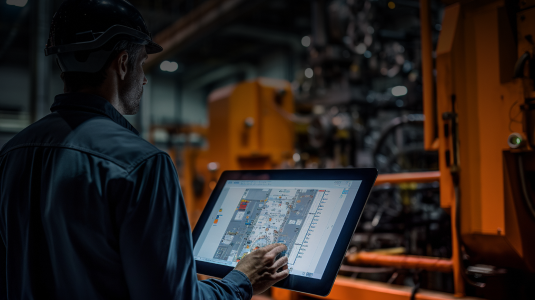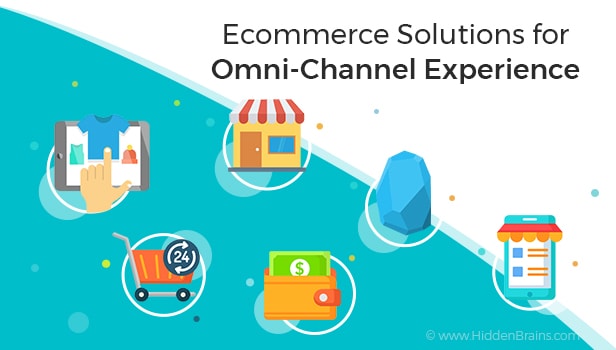Table of Contents
In not so distant past, ecommerce seemed to be a fairly simple process. It was about launching a website where customers, vendors or business stakeholders and partners accessed information about products, completed transactions or submitted inquiries. It was an era where website provided support mechanism to the operations and meeting retail targets. Direct-to-consumer channels were not the norm yet.
Fast forward to today. Those early ecommerce platforms are now just one of innumerable channels in today’s omnichannel commerce world. An effective online presence was just one of the effective ways to conduct product research, complete transactions, or collaborate with business partners and clients.
It is now the time for Omnichannel experience. Today’s savvy customers expect ease, convenience and innumerable options before actually buying a product. Brick and mortars must now are competing with ecommerce giants for seamless experience across online, social, and mobile channels. Even online giants like Amazon are constantly experimenting and with physical locations in order to accommodate their customers in a multitude of ways.
What Is OmniChannel?
Whether it is shopping online, desktop, mobile app development for ecommerce or bricks and mortar store, omnichannel experience is all providing customer an integrated shopping experience. Ultimately it comes down to the depth of the integration.
An amazing mobile app, appealing social media campaigns, high-performance website, everything needs to function flawlessly in sync for an omnichannel experience to engage and connect with customers. However, the customer lacks a seamless experience across each of these channels.
According to Statista.com, it was found that 43 percent of respondents searched goods online and purchased them online. A further 14 percent of respondents stated that they had search for goods online and later bought them in a store.
An omnichannel retailing approach aims to connect different platforms and devices a customer will use to interact with the company.
Omnichannel experiences use multiple channels, but not all multi-channel experiences are omnichannel. Remember that.
As it is time to take leap in 2018, let’s check ecommerce technology trends that you’ll want to keep an eye on. Let’s check the trends:
Ecommerce Drones: Prime Air — Amazon’s delivery system is designed to deliver packages to customers in 30 minutes or less using unmanned aerial vehicles, also called drones. Prime Air has great potential to enhance the services, increasing the overall safety and efficiency of the transportation system.
Courtesy:Amazon
Artificial Intelligence: AI helps increase customer engagement when implemented effectively can improve the online experience where users engage with an ‘intuitive’ online assistant. Researching a product or service online is the initial phase of ecommerce transaction. Online assistant makes that experience all the more convenient. AI technologies will equip ecommerce companies with intelligence and insights to help solve their business challenges. Using Artificial Intelligence, teams can identify the most likely product prospective customer can buy based on past purchase history and demographics.
Inventory management across different channels is one of the biggest worries for ecommerce companies as it takes days to restock products and can adversely affect merchants’ revenues. On the other hand, inventory overstocking increases business risks and capital requirements. Artificial intelligence can help with order velocity forecasting and enable merchants to accurately forecast inventory requirements.
Beacon
Beacons are a great way in providing a more rich experience to in-store shoppers. Beacon plays an instrumental role in broadcasting a signal to mobile phones and tablets within a transmitter’s proximity triggering location-based actions. Beacons can identify location with better accuracy than GPS.
XaaS: Redefining the Future
“XaaS is a collective term said to stand for a number of things including “X as a service,” ‘anything as a service’ or ‘everything as a service.’ This term is all about the increasing number of services delivered over the Internet instead of locally or onsite.”
XaaS has the potential to change the ecommerce technology. Your shopping cart, marketplace account, accounting software, inventory management system, and even your shipping and returns software are accessed via a website login. Cloud computing will be the pillar for XaaS, mainly for ecommerce retailers who are ready to embrace the technology.
Software as a Service (SaaS), Infrastructure as a Service (IaaS), and Platform as a Service (PaaS) are examples of what is at stake.
Conclusion:
With a combination of the ecommerce technologies & trends as well as ecommerce marketing, you can deliver a more robust and all-encompassing online shopping experience across devices and platforms. While emerging technologies such as drones are still in nascent stage, it is important to implement new technologies and evolve to reach out to wider audience and provide an omnichannel experience to users.
If you are looking to build omnichannel solutions, get in touch with our team. Check our portfolio of ecommerce mobile and web apps.













































